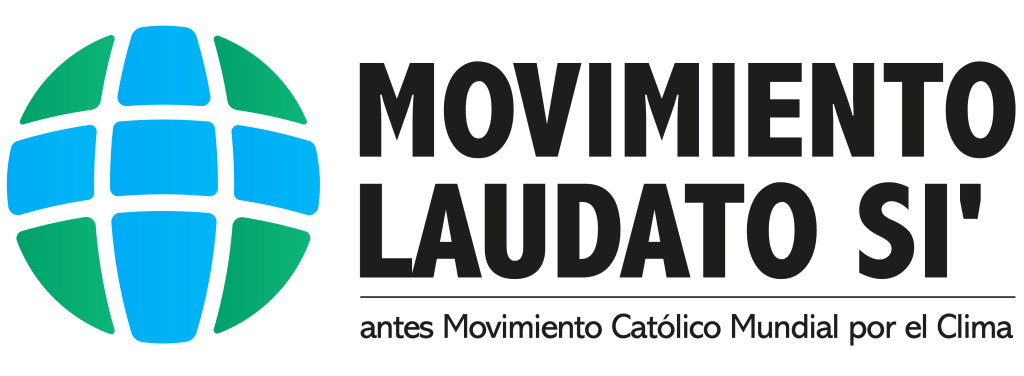
Too often the debate about caring for creation and working to stop the climate crisis ends up spiralling out of control. One person has his or her set of “facts,” and another person the same.
But the truth is out there, and as people of faith, we’re called to study the truth, proclaim it, and use it to care for God’s creation. “Living our vocation to be protectors of God’s handiwork is . . . not an optional or a secondary aspect of our Christian experience.” (LS 217)
Here are 10 common myths about caring for our common home.
1. The climate has always changed.
The climate has changed throughout history, but scientists say the climate change we’re seeing now across the world is caused by human beings putting more heat-trapping greenhouse gases into the atmosphere.
“Greenhouse gases – mainly CO2, but also methane – have been implicated in most of the climate changes in Earth’s past,” according to Skeptical Science, a website that addresses climate change skepticism.
“When they were reduced, the global climate became colder. When they were increased, the global climate became warmer. When changes were big and rapid (as they are today), the consequences for life on Earth were often dire – in some cases causing mass extinctions.”
2. Scientists disagree about the science of the climate crisis.
About 97 percent of climate scientists agree on the science of the climate crisis. From the National Aeronautics and Space Administration (NASA) in the U.S.:
“Multiple studies published in peer-reviewed scientific journals show that 97 percent or more of actively publishing climate scientists agree: Climate-warming trends over the past century are extremely likely due to human activities. In addition, most of the leading scientific organizations worldwide have issued public statements endorsing this position.”
Watch the below video for more information.
3. The average person can’t do anything about such a big problem.
One person’s actions are not going to stop the climate emergency. But one person’s actions can change his or her life and, in turn, influence others and the communities in which they live and work.
“One house with solar panels can lead to others in the neighborhood installing solar panels of their own. Likewise, we tend to conserve our electricity consumption when our utility bills tell us how our usage compares with our neighbors,” reports the New York Times.
Regular citizens around the world can also call their elected officials and make sure they’re making caring for creation a top priority. Such actions can lead to changing the world much faster than we might think.
From National Geographic: “Cars replaced horses within 15 years in many places. For thousands of years we got along without plastic, and then in a few decades it was everywhere. Throughout history, we’ve been both ingenious inventors and quick to adopt new technologies. With popular will and the right policies, we’ll have no problem creating new energy and transportation infrastructures, goods made without toxins or carbon emissions, biodegradable plastic substitutes.”
4. Catholics should worry about other issues, not climate change and science.
The history of Catholics caring for creation goes back millennia, dating back to the creation story in the book of Genesis.
Throughout the Church’s long history, countless people, saints, and popes have recognized that it is our duty to care for God’s creation.
Read more: 10 saints whose care for creation still inspires us today
Nowadays, Catholics throughout the world also remain guided by the seven Catholic Social Teaching principles, one of which is “care for our common home.”
Earlier this year, the Vatican further spelled out just vital caring for creation is to the Catholic faith.
In June, to celebrate the fifth anniversary of Laudato Si’, all of the Vatican’s dicasteries — its ministries or departments — worked together to publish practical environmental guidelines that will guide the global Church for years to come.
These first-ever guidelines are intended to be operational, and suggest concrete ways for the Church to implement Laudato Si’.
The guidelines frame investing in fossil fuels as an ethical choice, on par with other significant ethical choices.
The document suggests that Catholic institutions’ ethical commitments should lead to “ taking care not to support companies that harm human or social ecology (for example, through abortion or the arms trade), or environmental ecology (for example, through the use of fossil fuels).”
Click here to read “Journeying Towards Care For Our Common Home: Five Years After Laudato Si’”.
5. The Bible says that humans “are dominion” over everything else, which gives us permission to do as we please on Earth.
Genesis 1:28 reads, “. . . God said unto them, ‘Be fruitful and multiply, and replenish the earth, and subdue it; and have dominion over the fish of the sea, and over the fowl of the air, and over every living thing that moveth upon the earth.’”
What does “have dominion” mean? Pope Francis addresses the question at length in Laudato Si’.
“We are not God. The earth was here before us and it has been given to us. This allows us to respond to the charge that Judaeo-Christian thinking, on the basis of the Genesis account which grants man ‘dominion’ over the earth (cf. Gen 1:28), has encouraged the unbridled exploitation of nature by painting him as domineering and destructive by nature.” (LS 67)
Pope Francis elaborates, making clear that such an interpretation “is not a correct interpretation of the Bible as understood by the Church.”
“ . . . we must forcefully reject the notion that our being created in God’s image and given dominion over the earth justifies absolute domination over other creatures. The biblical texts are to be read in their context . . .” (LS 67)
Pope Francis goes on to cite Genesis 2:15, which reads: “The Lord God took the man and put him in the garden of Eden to till it and keep it.”
“‘Tilling’ refers to cultivating, ploughing or working, while ‘keeping’ means caring, protecting, overseeing and preserving. This implies a relationship of mutual responsibility between human beings and nature. Each community can take from the bounty of the earth whatever it needs for subsistence, but it also has the duty to protect the earth and to ensure its fruitfulness for coming generations.” (LS 67)
6. There’s no way to know how much the climate is changing because we don’t have records from hundreds of years ago.
It’s true that we do not have a thermometer from thousands of years ago, writes Christina Nunez of National Geographic.
“We do have other records that help us figure out what temperatures were like in the distant past. For example, trees store information about the climate in the place they’re rooted. Each year trees grow thicker and form new rings. In warmer and wetter years, the rings are thicker. Old trees and wood can tell us about conditions hundreds or even thousands of years ago.
“Windows [to] the past are also buried in lakes and oceans. Pollen, particles, and dead creatures fall to the bottom of oceans and lakes each year, forming sediments. Sediments contain a wealth of information about what was in the air and water when they fell. Scientists reveal this record by inserting hollow tubes into the mud to collect layers of sediment going back millions of years.
“For a direct look at the atmosphere of the past, scientists drill cores through the Earth’s polar ice sheets. Tiny bubbles trapped in the ice are actually samples from the Earth’s past atmosphere, frozen in time. That’s how we know that the concentrations of greenhouse gases since the Industrial Revolution are higher than they’ve been for hundreds of thousands of years.”
7. Pope Francis is the first pope to bring up caring for creation.
Popes have talked about the need for all people to care for creation for decades. Their appeals have become more frequent and grown louder as the ecological crisis and climate emergency have worsened.
In 1971, 49 years ago, Pope Paul VI said, “Man is suddenly becoming aware that by an ill-considered exploitation of nature he risks destroying it and becoming in his turn the victim of this degradation.”
During his 1990 World Day of Peace message, Saint John Paul II spoke out forcefully for creation. “There is a growing awareness that world peace is threatened not only by the arms race . . . but also by a lack of due respect for nature, by the plundering of natural resources and by a progressive decline in the quality of life.”
Pope Benedict XVI further built on the Church’s well-established teaching throughout his papacy. He also took action, overseeing the installation of solar panels on the Vatican’s Nervi Hall and helping make Vatican City the first country to become carbon neutral.
In Laudato Si’, the first papal encyclical on ecology, Pope Francis put the millennia of Catholic teaching in the context of today’s ecological crisis and climate emergency.
8. Climate models are not accurate.
Modeling is a difficult and complex act, to be sure, and all models have limits. But now that we’re decades into such projections, scientists also have studied how well past models have fared.
The answer: “most of the models have been quite accurate.”
One study compared 17 model projections of global average temperature developed between 1970 and 2007 with the actual global temperatures changes as of 2017.
“The results: 10 of the model projections closely matched observations. Moreover, after accounting for differences between modeled and actual changes in atmospheric carbon dioxide and other factors that drive climate, the number increased to 14. The authors found no evidence that the climate models evaluated either systematically overestimated or underestimated warming over the period of their projections,” wrote Alan Buis of NASA’s Jet Propulsion Laboratory.
“The results of this study of past climate models bolster scientists’ confidence that both they as well as today’s more advanced climate models are skillfully projecting global warming,” said Gavin Schmidt, study co-author and director of NASA’s Goddard Institute of Space Studies. “This research could help resolve public confusion around the performance of past climate modeling efforts.”
9. Logistically speaking, the world cannot stop the climate crisis.
Through improving a host of energy efficiencies — in buildings, power plants, and elsewhere — and by improving fuel economy, we can make big strides in reducing the amount of carbon emissions we’re emitting.
Better yet, the price of renewable energy, including wind and solar power, has dropped dramatically in recent years, making such a just transition feasible, writes John Cook, a climate communication research fellow.
We also can work for a just transition for most of the economy to go from running on fossil fuels to running on electricity. The solutions are out there, Cook writes.
“Make no mistake, transitioning our society to a carbon-free future is a huge and difficult challenge. Nevertheless, we have the technology required — we just need the political will to make the change. Every action we take now will reduce the risks we face from future climate impacts,” he wrote on BeforeTheFlood.com.
“And the cost to reduce emissions is relatively small compared to the cost of climate impacts on the economy, which will grow larger and larger over time. Economists estimate that the money saved by not acting now will be dwarfed by the costs of damage in the future. The old saying still holds: an ounce of prevention is worth a pound of cure.”
10. The situation is hopeless.
As people of faith, we know that things can change. Pope Francis reminds us of that in Laudato Si’, and we’ve been seeing it all around the world in recent years.
In 2015, 197 countries united and signed the landmark Paris Climate Agreement, vowing to limit the amount of global temperature increase to below 2 degrees Celsius, and push for a rise no greater than 1.5 degrees, by hitting the peak amount of greenhouse gas emissions as soon as possible.
The agreement remains the “first-ever, universal and legally binding global climate change agreement.”
The environmental guidelines released earlier this year were the first-ever such guidelines from the Vatican, and it was the first time the Vatican as a whole endorsed the fossil fuel divestment campaign.
That document came only one month after the largest-ever announcement of divestment by faith institutions. In May, 42 institutions in 14 countries announced their commitment to drop fossil fuels.
The movement to care for creation also grows every day as passionate people from around the world come together to become Laudato Si’ Animators and bring change to their communities across the world.





